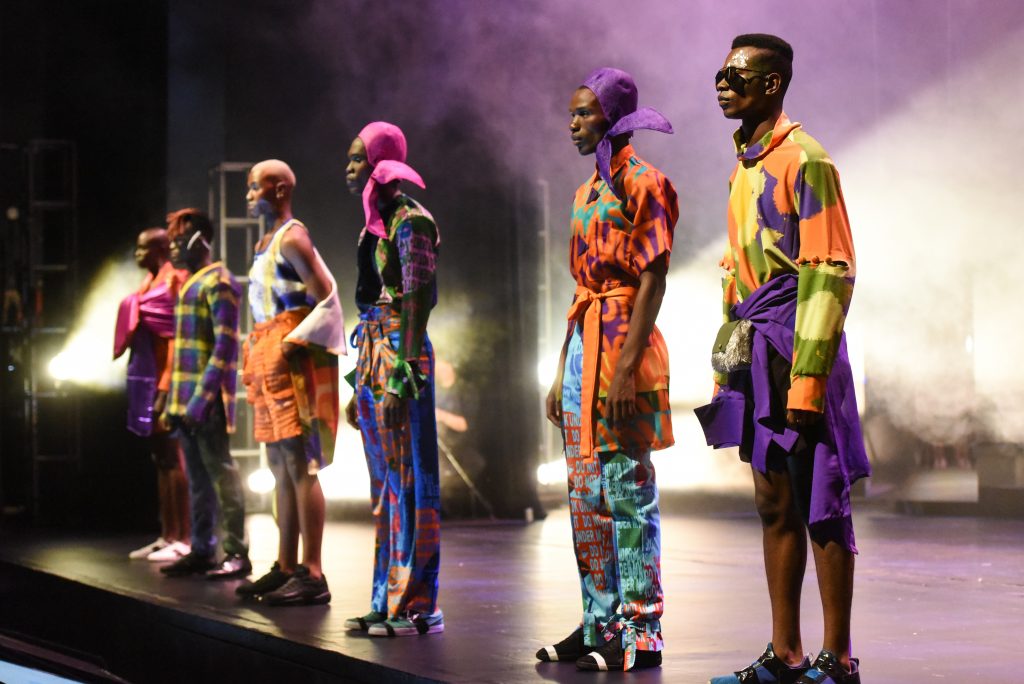Design Indaba 2014: The Conference
South Africa’s annual discourse on how creativity and innovation can affect real change throughout the world at large

Many wondrously pioneering things happen daily in South Africa, yet surprisingly much of the world still seems slightly unaware of the nation’s enduring commitment to progressive reform. The country is often still regarded by much of the modern world as underdeveloped—and even worse, unconcerned or unable. But each year founder Ravi Naidoo and his team at Design Indaba demonstrate exactly how wrong these preconceived notions are with a thought-provoking conference highlighting South Africa’s vested interest in how creativity and innovation can change the world, both at home and abroad.
A roster of diverse visionaries take to the stage each year and speak about topics which span human needs, democracy, added value, giving back, affordance, shortening feedback loops and more. With more than 30 speakers at this year’s conference, highlighting just a few is difficult. Here though, is a brief overview of a handful of inspiring people we were privileged to listen to this year, which collectively represent the variety of creative minds found at this ultra-encouraging conference.

Thomas Heatherwick
London-based architect Thomas Heatherwick did more than speak at Design Indaba, the prolifically industrious designer (whose eponymous studio is behind the Olympic Cauldron for the 2012 Olympic Games, the newly remained double-decker bus in London and the award-winning UK Pavilion for the 2010 Shanghai World Expo) also unveiled the full proposal for Zeitz MOCAA, a museum dedicated to contemporary African art and its diaspora. Heatherwick was tasked with turning a massive grain silo complete with 42 vertical concrete tubes into a cultural institution, and his plans for the ultra-complicated project are nothing short of astounding. Much like his vision for keeping the essence of London’s iconic Roadmaster bus, Heatherwick explained of designing Cape Town’s forthcoming waterfront museum, “Rather than strip out the evidence of the building’s industrial heritage, we wanted to find a way to enjoy and celebrate it.”
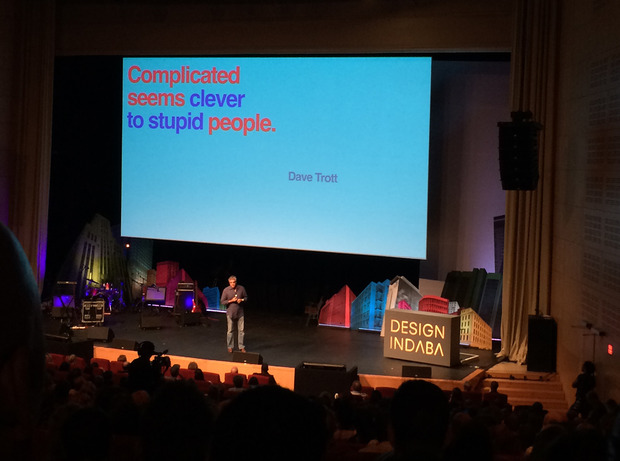
Marcello Serpa
Brazilian art director Marcello Serpa may be best known as the brains behind the Havaianas ad campaigns; an ongoing series that has turned the ubiquitous rubber flip-flop into a fashion statement. But the worldly creative—who lived in Germany for seven years before moving back to São Paulo where he eventually co-founded the agency AlmapBBDO—threw out a lot well-founded soundbites that work well beyond the realm of advertising strategy. “The cliché is immortal. It comforts the mediocre while protecting the cowards” is one such mode of thinking, but the avid surfer also spoke about his interest in sustainability, which serves as a foundation for creating relevant ad campaigns and for protecting the earth. This combination is visible in his compelling work for the Volkswagen bus (of which he’s also a proud owner), as well as his bold statement: “If everyone is saving the planet then who the fuck is destroying it?”
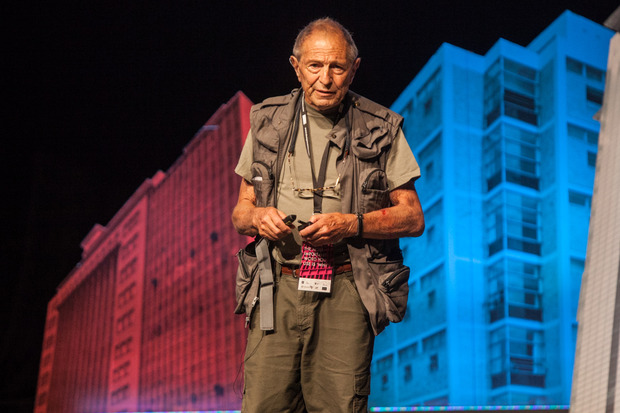
David Goldblatt
Bringing the crowd to a standing ovation, veteran photographer David Goldblatt was decidedly one of the most poignant speakers at Design Indaba 2014. Goldblatt is hailed as the first South African artist to be given a solo exhibition at MoMA, and it’s easy to see why the NYC institution applauded his work. A man of great depth, he showed his interest in people, and capturing them in both humorous and horrific situations. But it was his account of photographing Nelson Mandela that perhaps best summed up Goldblatt’s fantastic mind: instead of shooting Mandela in a cushiony chair that would position him as “all knees” and essentially a weak individual, Goldblatt refused and demanded that Mandela sit in a straight-back chair which would show his dignified nature. Among other achievements, Goldblatt was given a Lifetime Achievement Award by NYC’s International Center for Photography and he founded the Market Photography Workshop in Johannesburg, which allows young people disadvantaged by apartheid to learn valuable visual literacy and photographic skills.
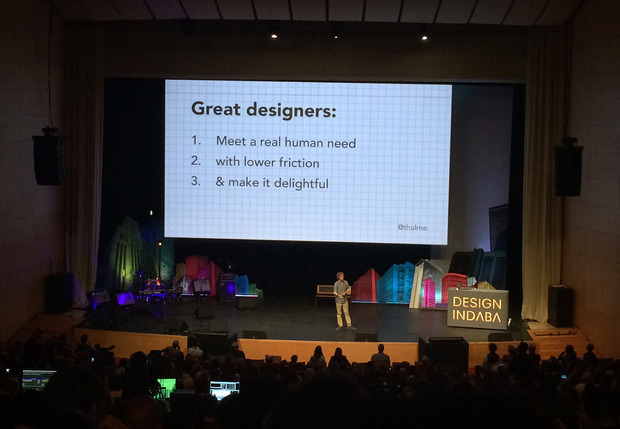
Tom Hulme
As a physics major, Design Director of IDEO London, devoted entrepreneur and self-dubbed “angel investor” who seemingly lives by the motto “talk less, do more,” Tom Hulme is perhaps the epitome of all that Design Indaba stands for. The altruistic designer entertained with a few brilliant examples of design evolution, from the very early alarm clock (a “knocker up”) to the Mosquito alarm, a noise only heard by young people and used to prevent them from loitering—until they in turn realized how to make it a ringtone which adult professors couldn’t hear during class. But his founding OpenIDEO and OIEngine demonstrates his idea that “everyone is a designer”—both of these projects allow communities to work together to create change through impactful design solutions. Hulme also believes in the power of collaboration, and one particular example he gave is #ANOTHERLIGHTUP, which was conceived by Design Indaba Trust, street artist Faith47 and consultancy Thingking. The project uses public art to provide residents of Cape Town’s dangerous Monwabisi Park with light, in an effort to raise money for permanent streetlights.

Lauren Beukes
Former journalist and award-winning novelist Lauren Beukes left the slideshow behind in favor of doing what she does best: storytelling. Beukes uses her own experiences growing up in South Africa—from the unjust death of a friend to apartheid—to create harrowing tales that are partially true and entirely riveting. She also enlightened the audience about one of the injustices of the post-apartheid Truth and Reconciliation Commission, which offered counseling to those who had been witness to violent crimes; all except for the numerous translators who served during the public hearings. Through a dramatic performance, Beukes spoke about the importance of letting go, using art for good (such as her charity exhibition for Rape Crisis) and using stories as a defense mechanism.

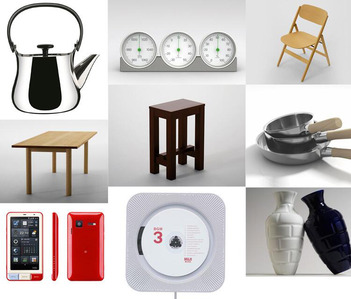
Naoto Fukasawa
Legendary Japanese industrial designer Naoto Fukasawa spoke for a second time at Design Indaba, the first occurrence happening 11 years ago. Designing under his own name since 2003, the former IDEO head is renowned for his ability to create simple, functional products that are as easy to use as they are aesthetically pleasing. Stating, “Ask your body what to design, it knows more than your mind,” Fukasawa focuses on how the product relates to human needs and their inherent behaviors. By seeing the demand instead of the product first, it not only adds value but decreases waste. In Fukasawa’s mind, “A word ‘world’ could represent a place where we belong rather than an aggregation of different nations,” and his products speak to such a desire.
Photos by Karen Day and Jonx Pillemer, courtesy of Design Indaba


